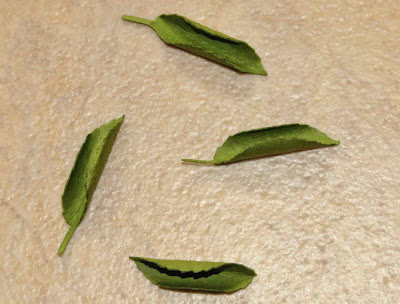
Product List
Large Retro punch or 5-6 petal punch
Small Retro punch or 5-6 petal punch
leaf punch in proportion to your flowrs
Thin handle paintbrush or wood skewer stick
Adhesive of your choice
ink
water spray bottle

Step 1.
Punch 2-3 flowers from the large punch and give them a quick spritz of water. do not soak.

Step 2.
Using the thin handle of the paintbrush, curl the edges of one side of the petals. You can also scrunch the flower slightly to give it texture before you curl the petals. Let dry.

Step 3.
Glue one flower layer over the other, staggering the petals.

Step 4.
Using your favorite tiny rose tutorial make a small rose for the middle of the flower. I used 2 flower layers for the tight middle, and 2 more layers for the outside curled petals.

Step 5.
Your small rose should fit nice and snug in the larger flower.

Step 6.
Ink your flower edges.

Step 7.
Glue your rose onto your flower layers.

Step 8.
Punch out or hand cut 4 leaves for each flower.

Step 9.
Fold and sharply crease the leaves right sides together.

Step 10.
Using your skewer or paintbrush handle, roll your leaves around it tightly.

Step 11.
Now fold back the leaves the opposite way and pinch the underside (wrong) side at the top part of the leave to give it dimension.

Step 12.
Glue 2 leaves together at the base staggering slightly.

Step 13.
Glue the leaf clusters to the underside of the flower in any way you like. I did opposite ends in this tute. Make sure you like how much is showing on the right side of the flower.

Your flowers are done...Show me what you can do!!




























